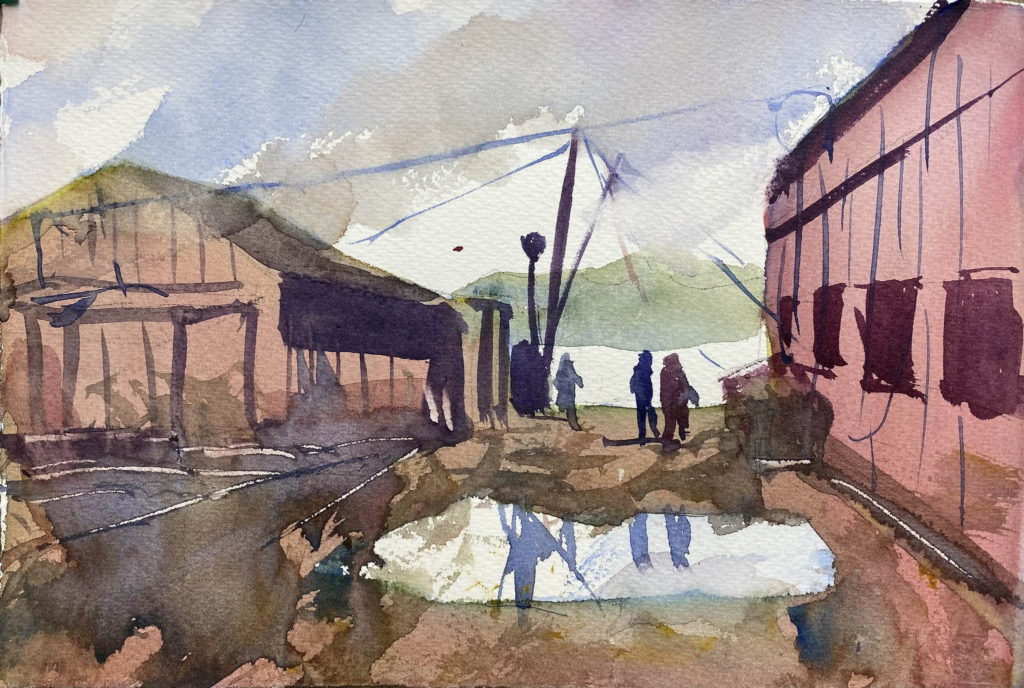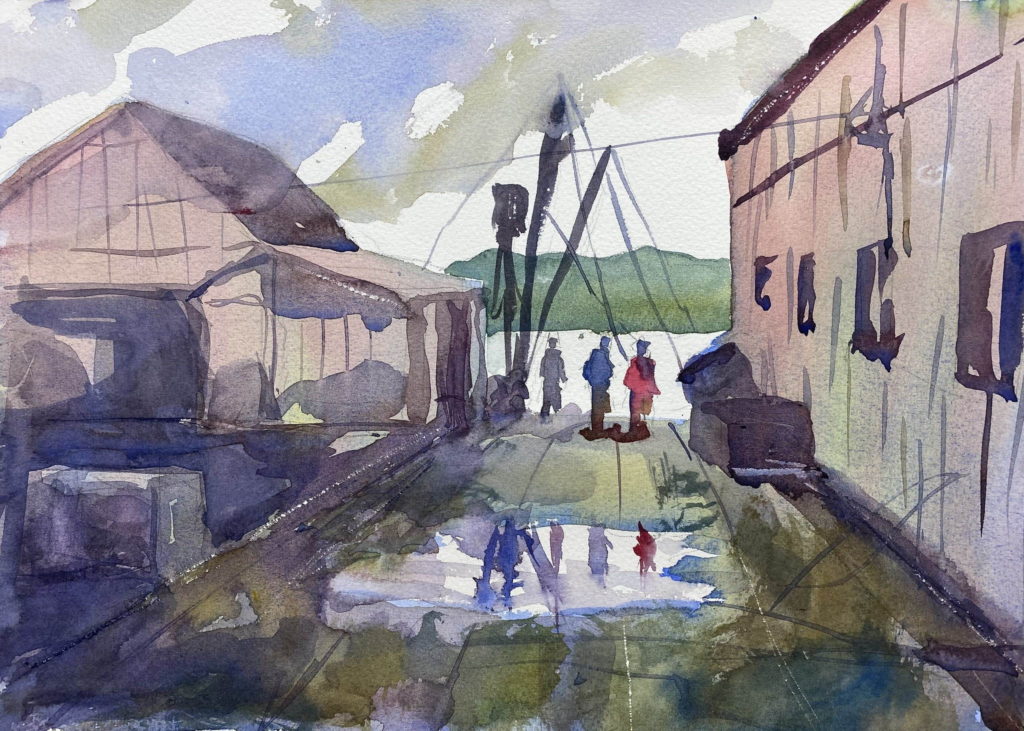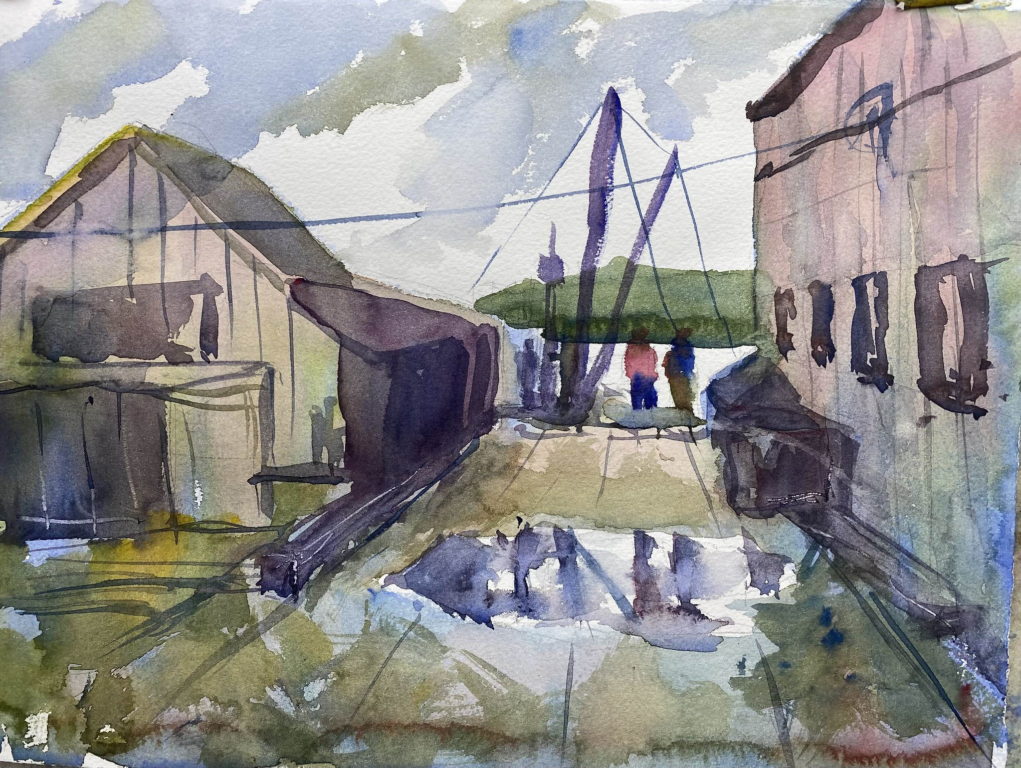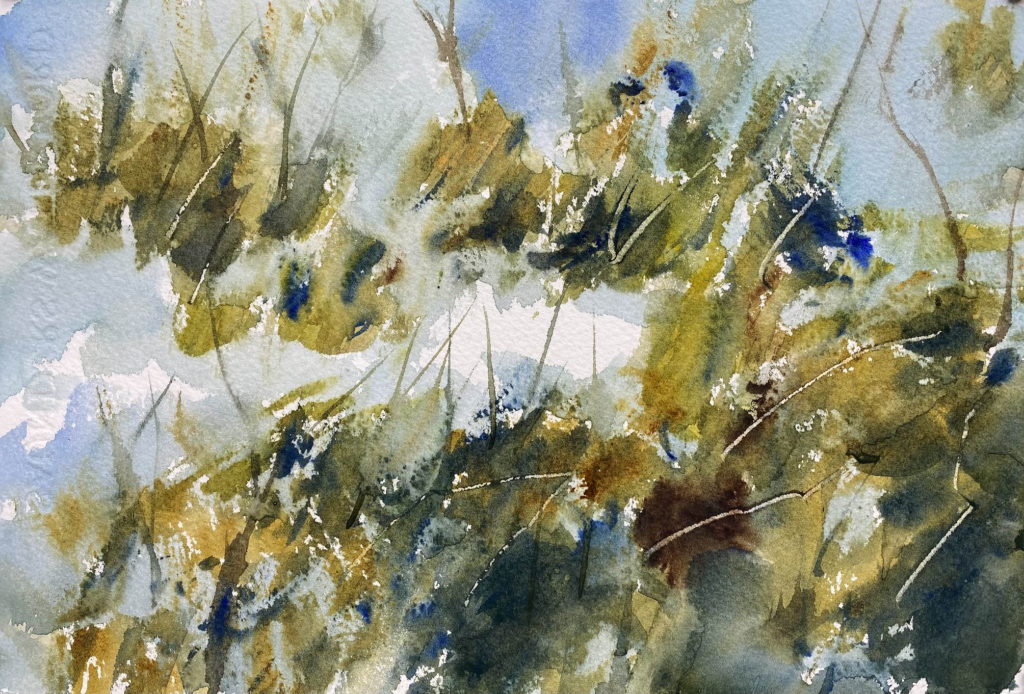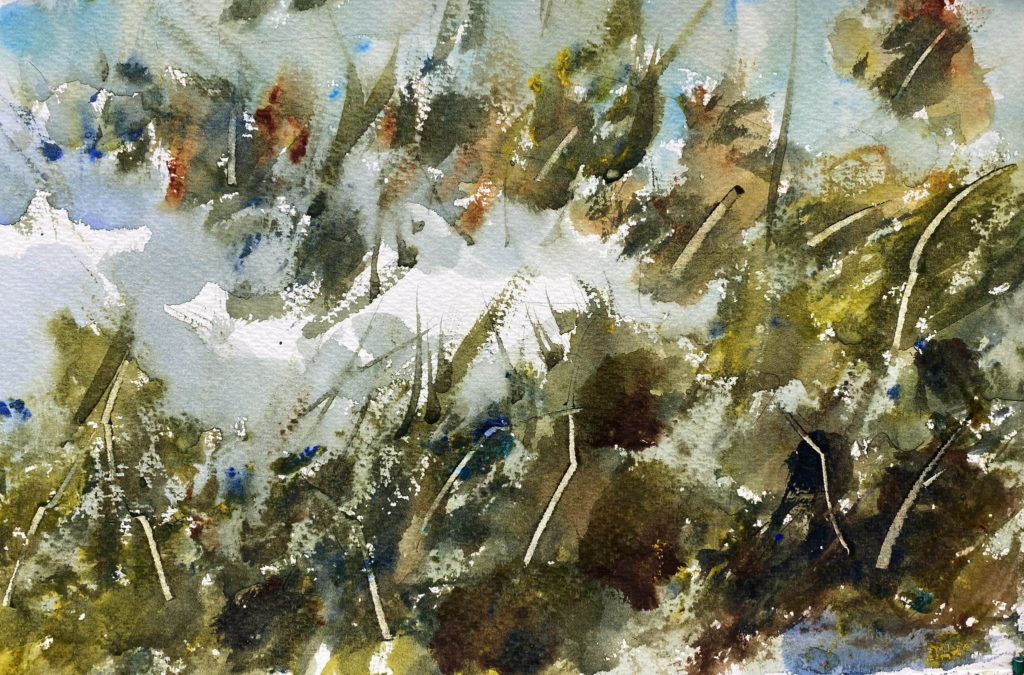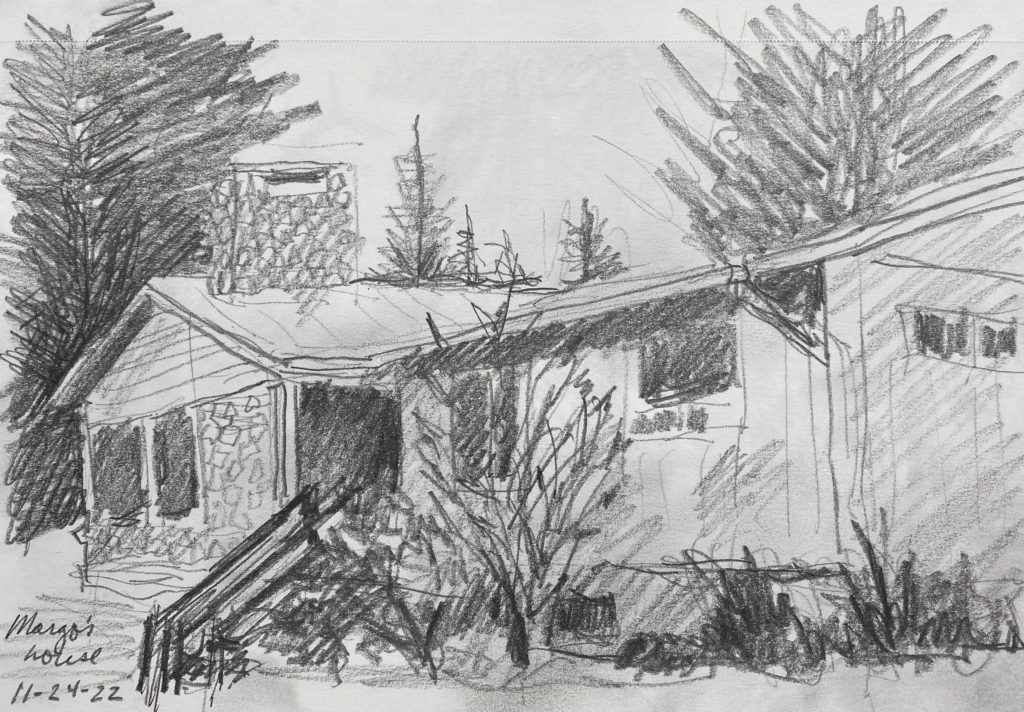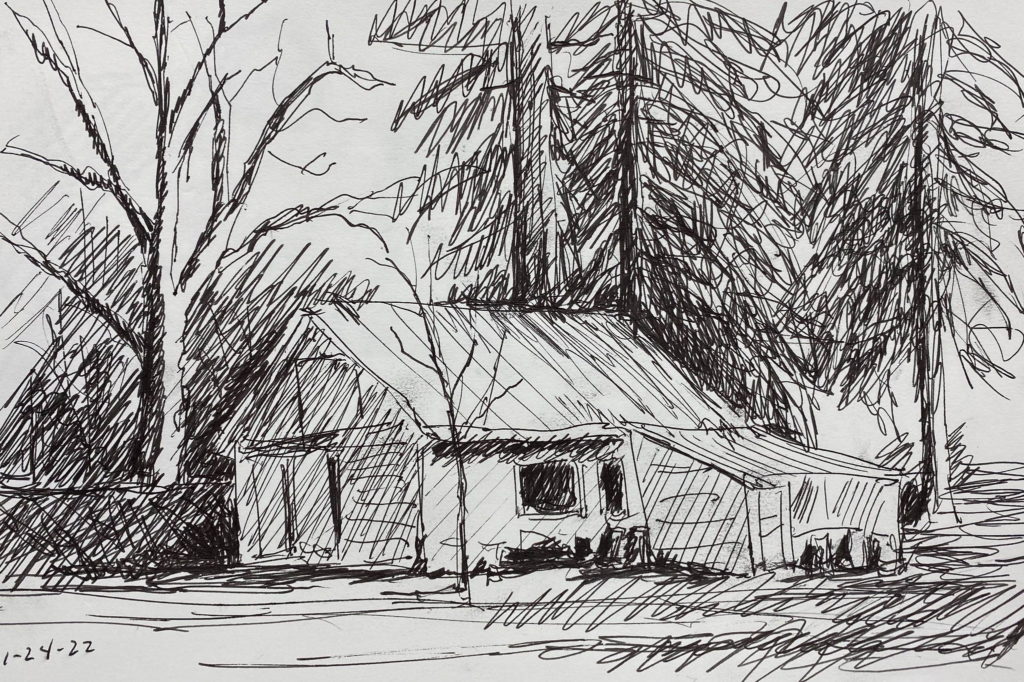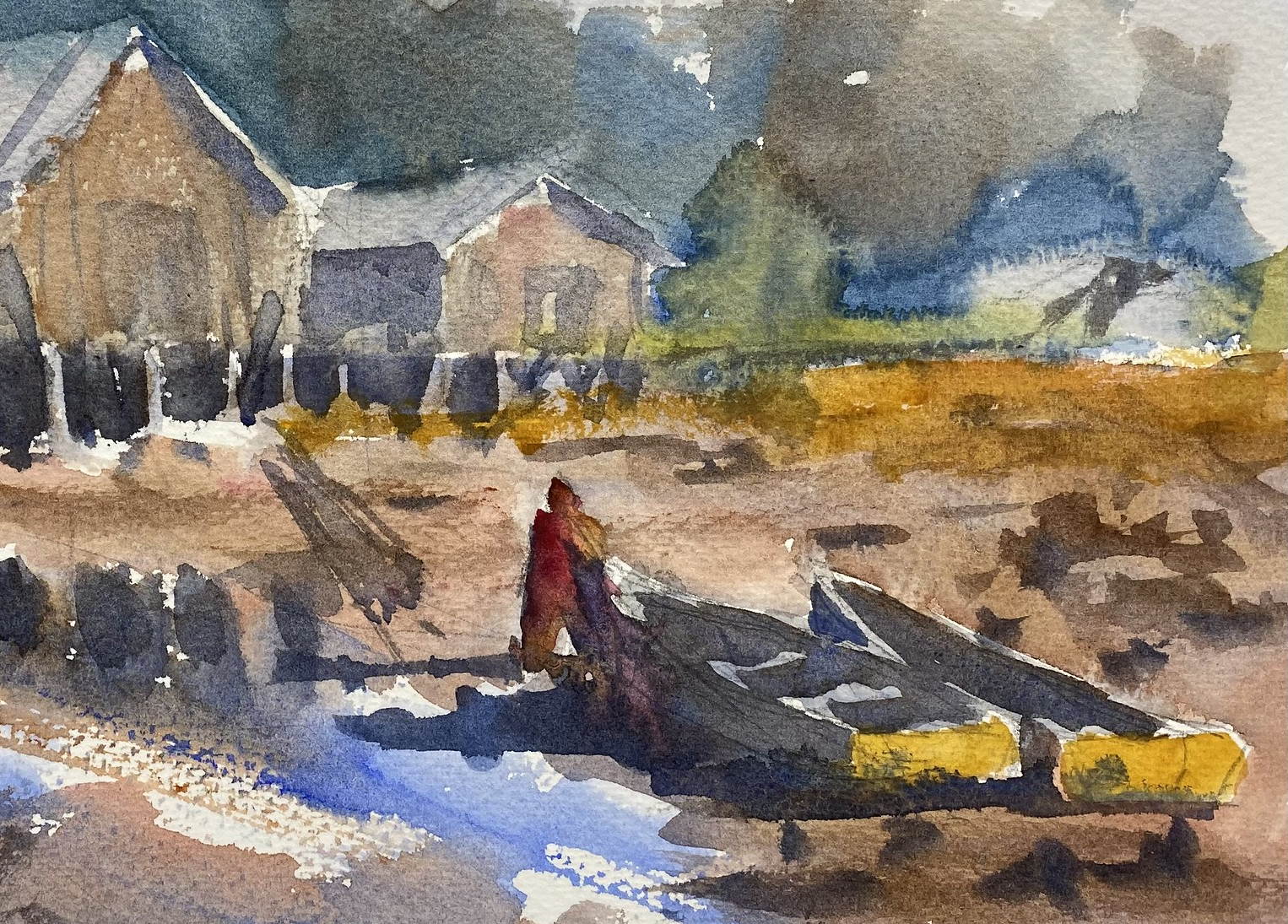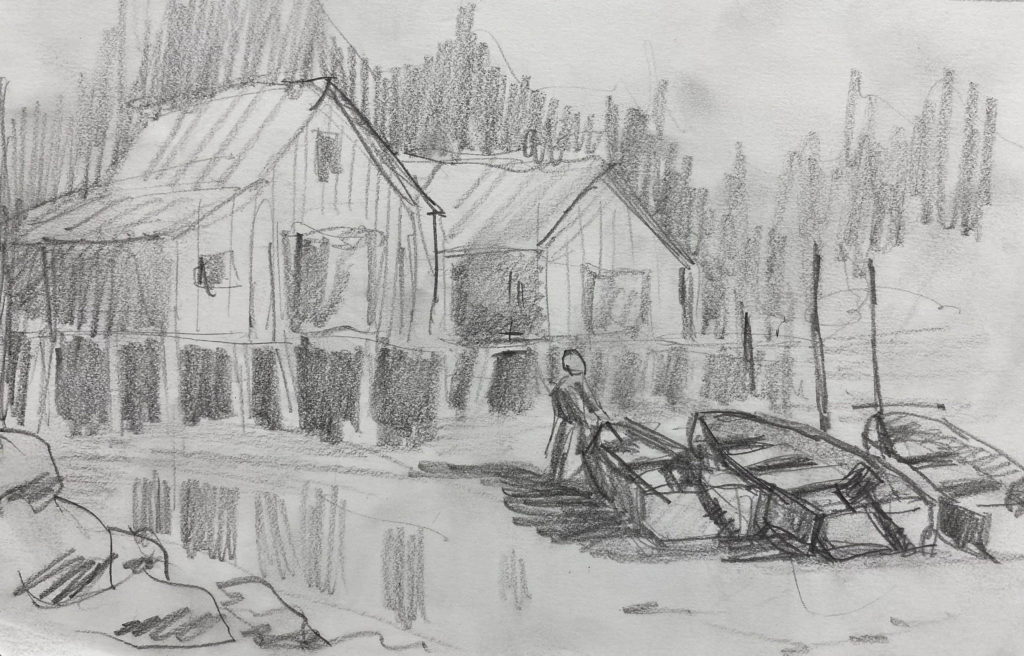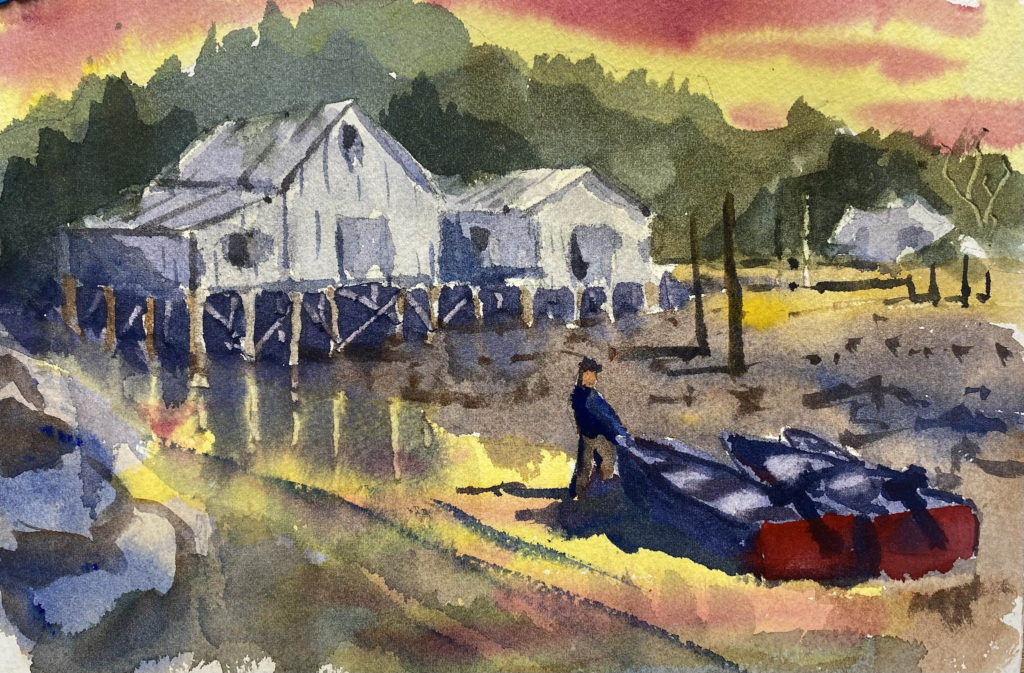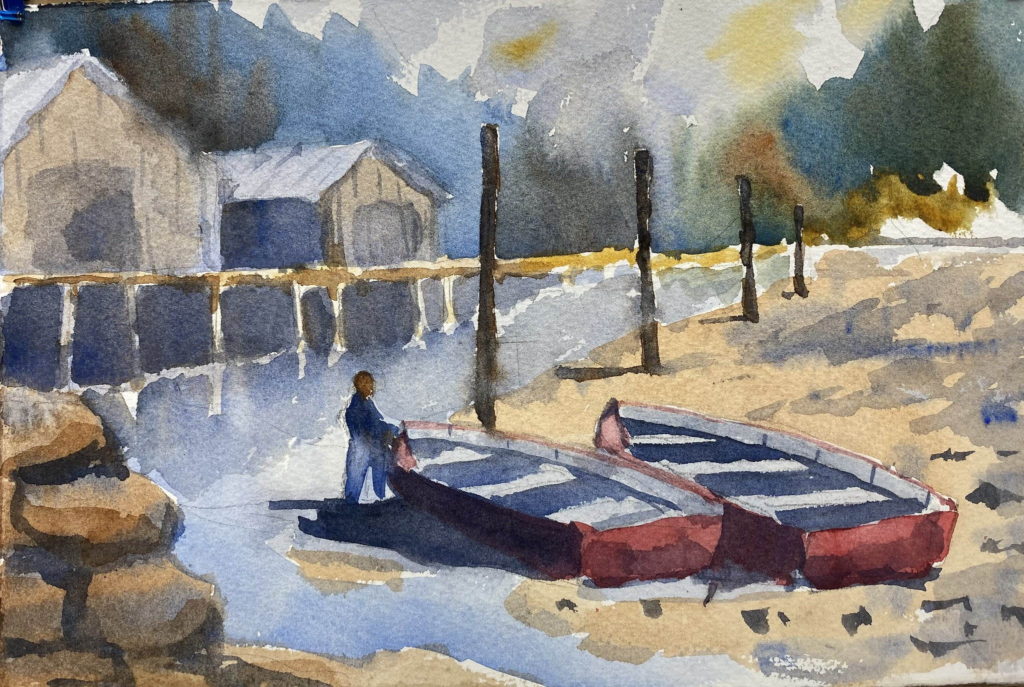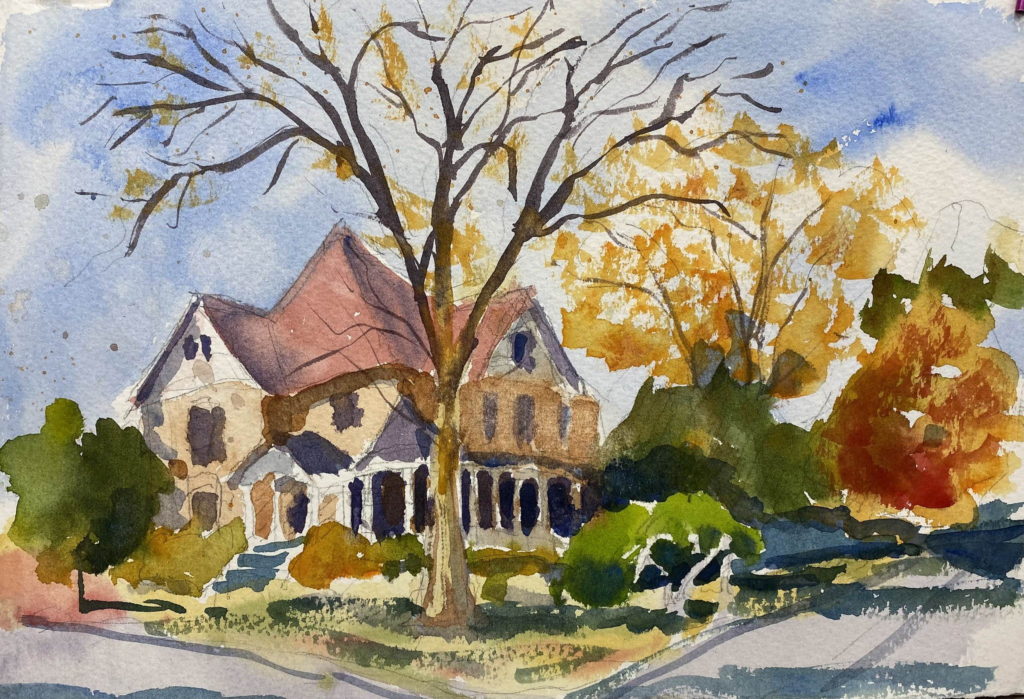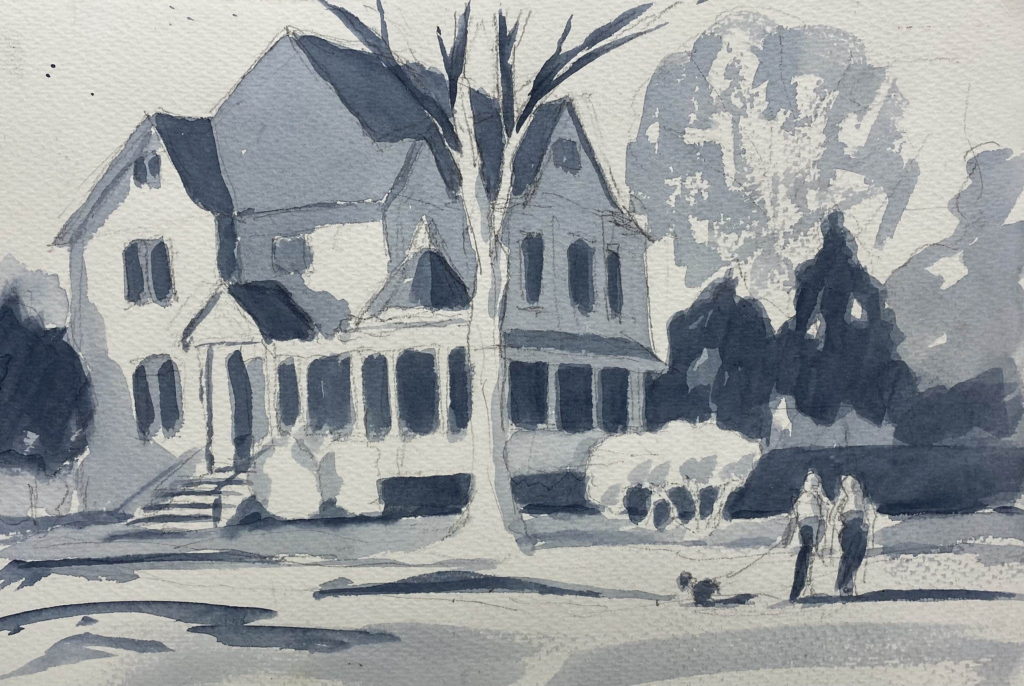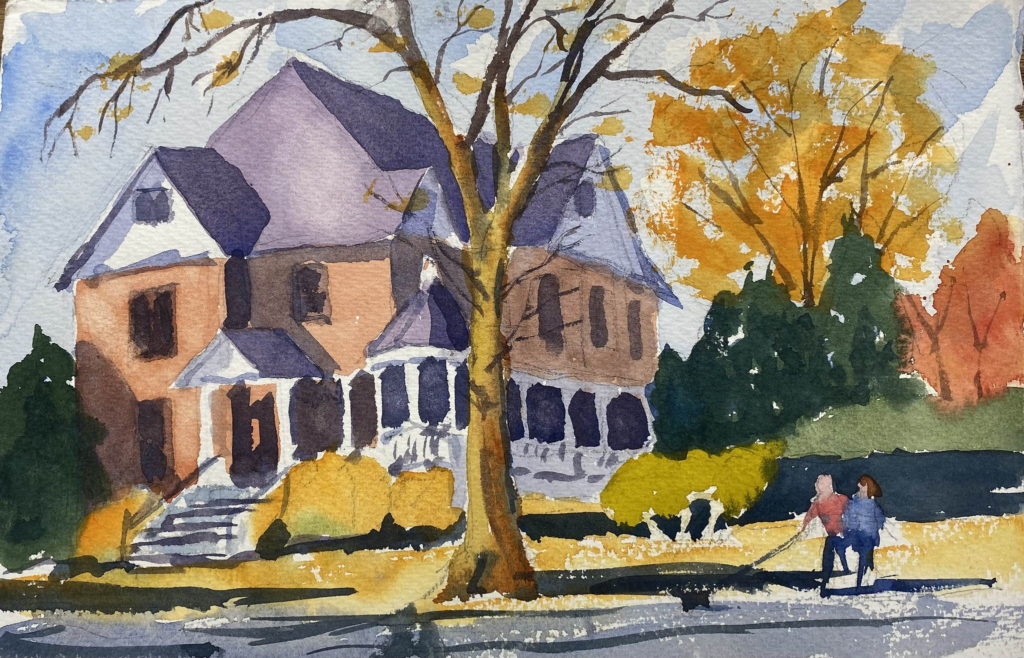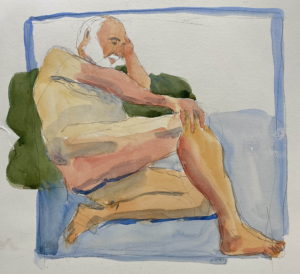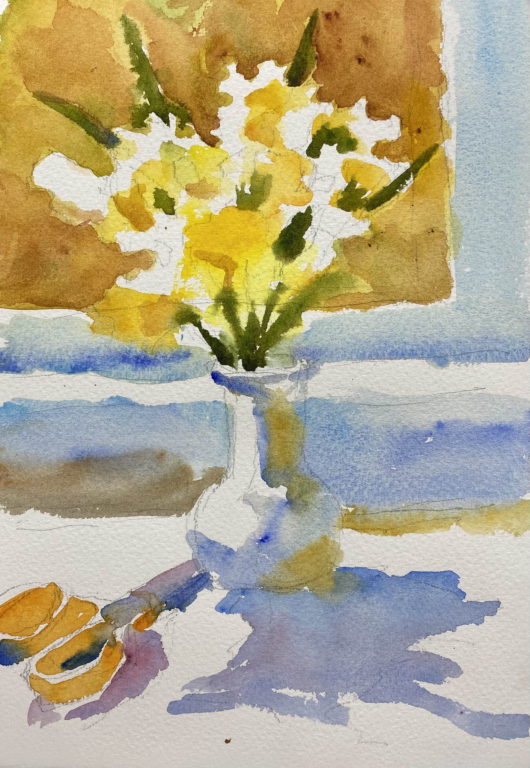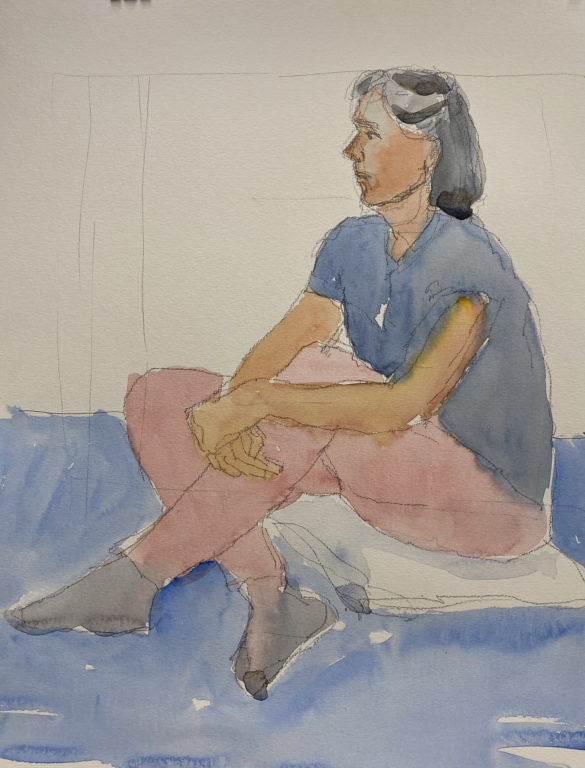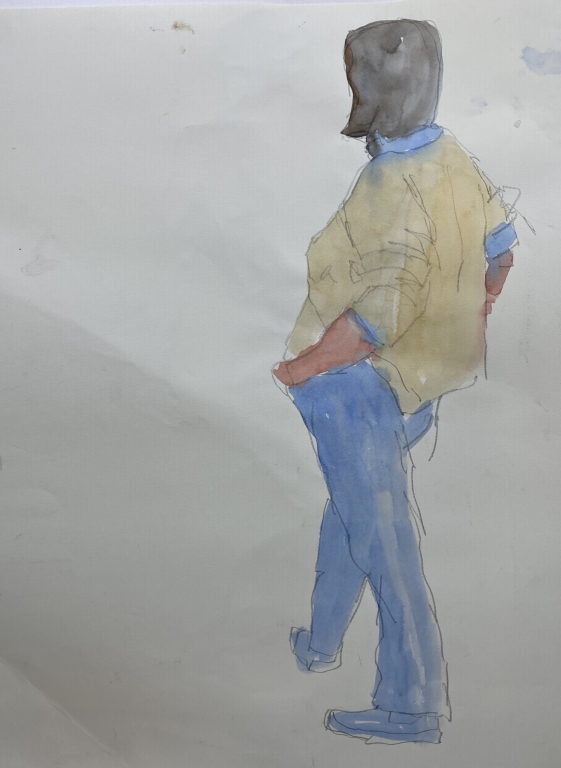I’ve been feeling lonely as a watercolor artist, so I thought I’d try a watercolor class to find some challenge and stimulation. I chose an online class by Eric Weigardt, a highly regarded watercolor painter and teacher who is based in Ocean Park, Washington. My friend Dick Daugherty recommended this class and I like Eric’s loose approach to watercolors.
Eric’s class has about 25 students, mostly retired people, who want to improve their watercolor paintings. He’s very patient and personable, and his wife, Ann, works with him to administer the class. The class meets on Zoom, four Saturdays a month from 9:00 to 10:15 am. My first class was November 6, in which Eric painted a demo painting of a beach scene. He used a photo taken from the water looking at the beach, with some waves, a beach, and some trees behind the beach. It was an unremarkable photo, but he showed us how to create a center of interest using strong values, more intense colors, and hard edges. It was very helpful to hear his thinking as he painted. The result was stunning.
Eric has a simple approach to creating a watercolor. He has three criteria: 1. The painting should catch the eye at a distance. 2. The painting should carry the viewer’s eye throughout the picture plane. 3. The painting should bring the viewer’s eye to the area of dominance and hold it there as long as possible.
My second class session was November 13. For this session, each student sent Eric a photo of their painting for critique. He spent considerable time with each painting, making comments appropriate to that student. He obviously knows his students well because he commented on the progress they’ve made and often referred to a previous painting they submitted. He’s very thoughtful and kind-hearted in his approach.
I submitted my value study and watercolor of the Lind house on Belleview Avenue (see my previous post). He first asked me about my background as an artist, if I’d taken any watercolor workshops. I said I’d taken workshops from Herman Pekel and Tom Hoffman. He said, “It shows.”
He admired my value study and the way I painted three values, light medium and dark. Then he turned to the watercolor and suggested that rather than have hard edges between my shapes (the house and the trees, for example), that I paint these shapes wetter and allow the pigment to merge between the two shapes.
It’s a good critique. My shapes look separate from each other, like they were pasted on, and painting them wetter would produce a more interesting painting, more connected and unified. It’s hard to keep the washes wet, especially in a dry climate like Colorado, and it’s also difficult to let go of control with wet washes. Who knows where that wash will go? But this is what I’ll concentrate on for next week.
I learned a lot from the critiques he made of other artists’ paintings, as well as mine. All in all it was a good learning experience, and I’m looking forward to my next class.
